
Papua, formerly Irian Jaya, is the largest and easternmost province of Indonesia, comprising most of Western New Guinea. The province is located on the island of New Guinea. It is bordered by the state of Papua New Guinea to the east, the province of West Papua to the west, the Pacific Ocean to the north, and the Arafura Sea to the south. The province also shares maritime boundaries with Palau to the north. The province is divided into twenty-eight regencies and one city. Its capital and largest city is Jayapura. The province has a large potential in natural resources, such as gold, nickel, petroleum, etc. Puncak Jaya is the province's highest mountain and the highest point in Indonesia. Papua, along with West Papua, has a higher degree of autonomy level compared to other Indonesian provinces.
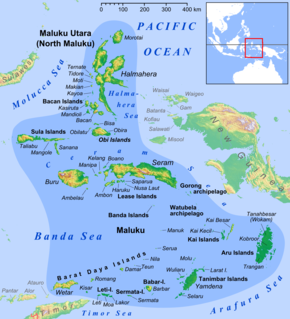
The Maluku Islands or the Moluccas (Molukken) are an archipelago in eastern Indonesia. Tectonically they are located on the Halmahera Plate within the Molucca Sea Collision Zone. Geographically they are located east of Sulawesi, west of New Guinea, and north and east of Timor. Lying within Wallacea, the Maluku islands have been considered part of both Asia and Oceania.

The Bacan Islands, formerly also known as the Bachans, Bachians, and Batchians, are a group of islands in the Moluccas in Indonesia. They are mountainous and forested, lying south of Ternate and southwest of Halmahera. The islands are administered by the South Halmahera Regency of North Maluku Province. They formerly constituted the Sultanate of Bacan.

Ambon Island is part of the Maluku Islands of Indonesia. The island has an area of 743.37 km2 (287.02 sq mi) and is mountainous, well watered, and fertile. Ambon Island consists of two territories - the city of Ambon to the south and various districts (kecamatan) of the Central Maluku Regency to the north. The main city and seaport is Ambon, which is also the capital of Maluku province, while those districts of Maluku Tengah Regency situated on Ambon Island had a 2020 Census population of 128,069. Ambon has an airport and is home to the Pattimura University and Open University, state universities, and a few private universities, which include Darussalam University and Universitas Kristen Indonesia Maluku (UKIM).

North Moluccas is a province of Indonesia. It covers the northern part of the Maluku Islands, bordering the Pacific Ocean to the north, the Halmahera Sea to the east, the Molucca Sea to the west, and the Seram Sea to the south. The provincial capital is Sofifi on the largest island of Halmahera, while the largest city is the island city of Ternate. The population of North Maluku was 1,038,087 in the 2010 census, making it one of the least-populous provinces in Indonesia, but by the 2020 Census the population had risen to 1,278,764.
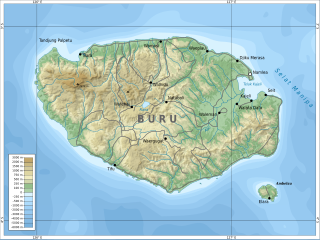
Buru is the third largest island within Maluku Islands of Indonesia. It lies between the Banda Sea to the south and Seram Sea to the north, west of Ambon and Seram islands. The island belongs to Maluku province and includes the Buru and South Buru regencies. Their administrative centers, Namlea and Namrole, respectively, have ports and the largest towns of the island. There is a military airport at Namlea which supports civilian cargo transportation.
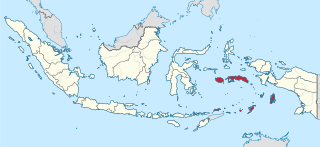
Maluku is a province of Indonesia. It comprises the central and southern regions of the Maluku Islands. The main city and capital of Maluku province is Ambon on the small Ambon Island. The land area is 62,946 km2, and the total population of this province at the 2010 census was 1,533,506 people, rising to 1,848,923 at the 2020 Census. Maluku is located in Eastern Indonesia. It is directly adjacent to North Maluku and West Papua in the north, Central Sulawesi, and Southeast Sulawesi in the west, Banda Sea, East Timor and East Nusa Tenggara in the south and Arafura Sea and Papua in the east.
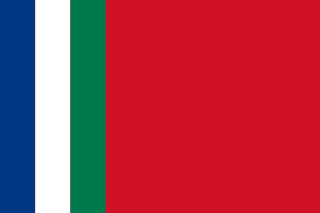
South Maluku, officially the Republic of South Maluku, is an unrecognized secessionist republic that claims the islands of Ambon, Buru, and Seram, which makes up the Indonesian province of Maluku.

The Ambonese, also known as South Moluccans, are an Indonesian ethnic group of mixed Austronesian and Melanesian origin. They are majority Christians followed by Muslims. The Ambonese are from Ambon Island in Maluku, an island group east of Sulawesi and north of Timor in Indonesia. They also live on the southwest of Seram Island; which is part of the Moluccas, Java, New Guinea; on the West Papua side and other regions of Indonesia. Additionally, there are about 35,000 Ambonese people living in the Netherlands. By the end of the 20th century, there were 258,331 Ambonese people living in Ambon, Maluku.
The Central Maluku languages are a proposed subgroup of the Central–Eastern Malayo-Polynesian branch of the Austronesian language family which comprises around fifty languages spoken principally on the Seram, Buru, Ambon, Kei, and the Sula Islands. None of the languages have as many as fifty thousand speakers, and several are extinct.
Moluccans are the Austronesian-speaking ethnic groups indigenous to the Maluku Islands, also called the Moluccas, which have been part of Indonesia since 1950. As such, "Moluccans" is used as a blanket term for various ethnic and linguistic groups inhabiting the islands.
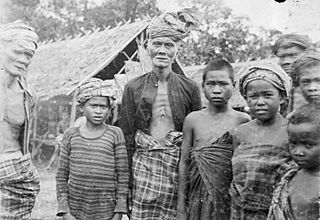
Buru people is an ethnic group mostly living on Indonesian island Buru, as well as on some other Maluku Islands. They also call themselves Gebfuka or Gebemliar, which literally means "people of the world" or "people of the land". Buru people are related to the eastern Indonesian anthropological group and from an ethnographic point of view are similar to other indigenous peoples of the island Buru. They speak the Buru language.

Lisela or Rana people is an ethnic group mostly living on Indonesian island Buru, as well as on some other Maluku Islands. They belong to the eastern Indonesian anthropological group and are sometimes referred to as northern Buru people. From an ethnographic point of view, Lisela are similar to other indigenous peoples of Buru island. They speak the Lisela language.
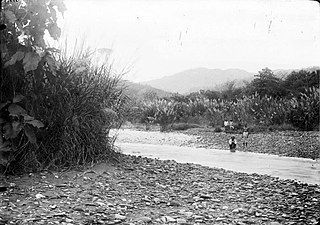
Kayeli people is an ethnic group mainly living on the southern coast of the Kayeli Gulf of Indonesian island Buru, mainly from the Kaiely Gulf. From an ethnographic point of view, Kayeli are close to other indigenous people of Buru, such as Lisela and Buru.
Ambelau is an Austronesian language; in 1989, it was spoken by about 5,700 Ambelau people, of whom more than 5,000 lived on the Indonesian island Ambelau and most others in the village Wae Tawa of the nearby island Buru.
Buru or Buruese is a Malayo-Polynesian language of the Central Maluku branch. In 1991 it was spoken by approximately 45,000 Buru people who live on the Indonesian island of Buru. It is also preserved in the Buru communities on Ambon and some other Maluku Islands, as well as in the Indonesian capital Jakarta and in the Netherlands.
Kayeli is an extinct Austronesian language once used by the Kayeli people of the Indonesian island Buru. Two dialects were recognized, namely Leliali (Liliali) and Lumaete.
Lisela, also called Li Enyorot, is an Austronesian language; in 1989 it was spoken by about 11,900 Lisela people mostly living in the northern part of Indonesian island Buru. It is also preserved among the small Lisela community on the Ambon Island.

Ambelau or Ambalau is a volcanic island in the Banda Sea within Maluku Islands of Indonesia. The island forms an administrative district which is part of the South Buru Regency of Maluku province, Indonesia. It has a land area of 201.7 km2, and had a population of 6,846 at the 2010 Census. The administrative center is Wailua, a settlement located at the south of the island. About half of the island's population is composed of indigenous Ambelau people who speak the Ambelau language; the other half are mostly immigrants from the nearby Maluku Islands and Java.
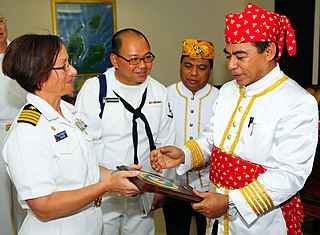
Tobelo people is one of the northern Halmahera peoples living in eastern Indonesia, in the northern part of the Maluku Islands and in the eastern side of North Halmahera Regency.













